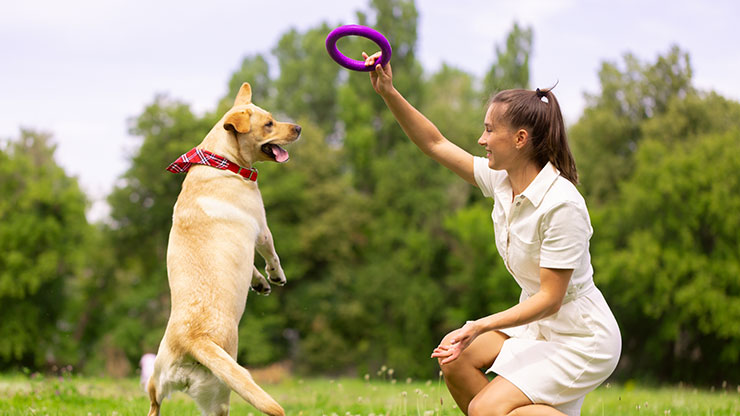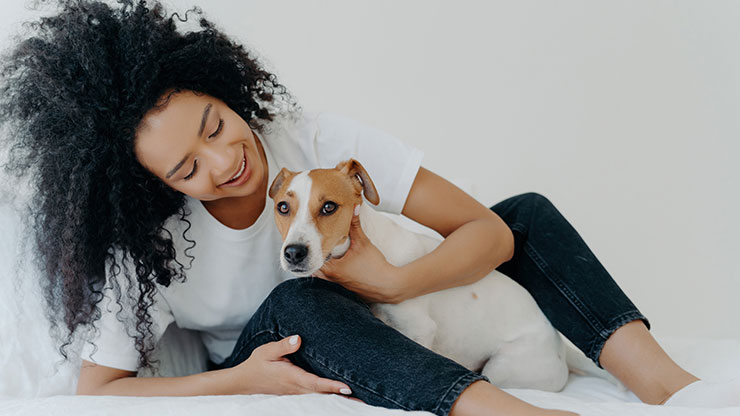
Dogs and Facial Expressions: Do Dogs Not Like Passive or Unresponsive People?
Dogs are hardwired to pick up on subtle gestures and nearby threats to the pack. Today, however, that sixth sense usually translates into barking at every postman and delivery service that graces your front yard.
That said, your canine pal still uses some of its ancestral instincts to pick up on minute behavior queues when interacting with humans. Recent research published in the Journal of Applied Animal Welfare Science found that, like infant humans, dogs are put off by people with “still-face” and are less likely to bond with those that show little-to-no facial expressions.
As a dog owner, you can reduce your pup’s social anxiety by fully engaging with your puppy during training and play. This will calm your dog down and help you form a lasting bond.
Bonding and Facial Expressions
Bonding with a new puppy can be a challenge. Your dog may feel uncomfortable in their new home and could be stressed out by the environment they’re in. Sure signs of poor bonding include:
- Minimal eye contact;
- Aggression;
- Attempts to run away;
- Failure to respond to commands.
Poor bonding can be stressful for you as a pet parent, too. You want to feel connected to your pup and may feel like a bad owner if your dog ignores you or regularly tries to run away.
Fortunately, you can overcome the signs of poor bonding with plenty of play, care, and affection. While training your dog, amplify your expressions and reinforce your praise with positive body language. Intentionally smiling is good for your health, too. Beaming from cheek to cheek can reduce your stress, increase your productivity, and help you form stronger social bonds with those around you.
Remember that your pup constantly looks to your face for reassurance and will feel conflicted if you have a passive or unresponsive expression. Like children, dogs who see a passive, unresponsive human face will break off attempts to bond and will be less motivated to interact with you. Instead, show that you care with big emotions and theatrical displays of affection.

Assessing Your Pup’s Personality
Most dog breeds enjoy human company and love nothing more than a good head scratch and tussle over a tug toy. However, you may still struggle to connect with your dog even when you take on an engaged, positive facial expression and tone.
Learn to read and understand your dog’s preferences by recognizing the signs of dog signaling. Unlike humans, dogs can’t tell you when they don’t enjoy an activity or feel uncomfortable. Instead, you must take in a range of signs and subtle signals to pick up on your dog's preferences. Generally, dogs show their discomfort with signs like:
- Mild Distress: yawning, turning away, sitting, pawing.
- Higher Distress: Walking away, ears back, creeping, lying down.
- Extreme Distress: Stiffening up, growling, staring, snapping, biting.
Clearly, you don’t want to cause your dog undue distress while trying to strengthen your bond. Learn to recognize early signs like yawning or pawing and pick a different play time if your pup isn’t in the mood.
Strengthen your bond by adjusting your approach to meet your canine companion’s personality. Like humans, all dogs have different personalities that may impact their ability to connect with facial expressions like joy and laughter. Factors like genetics, previous social encounter, past trauma, or tolerance for stimuli such as loud noises, fast movements, or vigorous play may determine their temperament.
Adjusting to suit your pup’s personality ensures that the environment is right for them and will help you form a strong bond that lasts.

Engaging Activities
You can double down on your commitment to positive bonding with your dog by engaging in activities that bring you and your pup joy. Activities like swimming, walking, puppy training, and agility runs are fun for your dog and will naturally bring a reassuring smile to your face.
If you’re planning a day of engaging activities at home, be sure to make your space safe before you start playing together. For example, if your dog likes to swim, follow pet pool safety guidelines by teaching your pup to swim safely and supervising them at all times. You should also be sure to rinse off your pet after they are done swimming and keep them fed and well-hydrated throughout their play session.
It’s worth noting that you can’t always give your pup the attention and affection they crave. If you work from home, you may need to focus without the distraction of a dog for large parts of the day.
Help your dog find happiness while working from home by sticking to a schedule throughout the day. Like humans, dogs run on a daily routine and are happy to relax while you get down to business. However, they will want affection when you’re off work, so prepare a few fun activities to fill your lunch break or take a walk to the local dog park where you can play, show affection, and give your pup the attention they deserve.
Conclusion
Dogs love being around humans that show plenty of positive emotions. However, before you start petting your pup and playing tug of war, you should learn to read your dog’s mood and adjust your approach to suit their personality. This will strengthen your bond and help you recognize the signs of discomfort before your pup becomes truly distressed.










